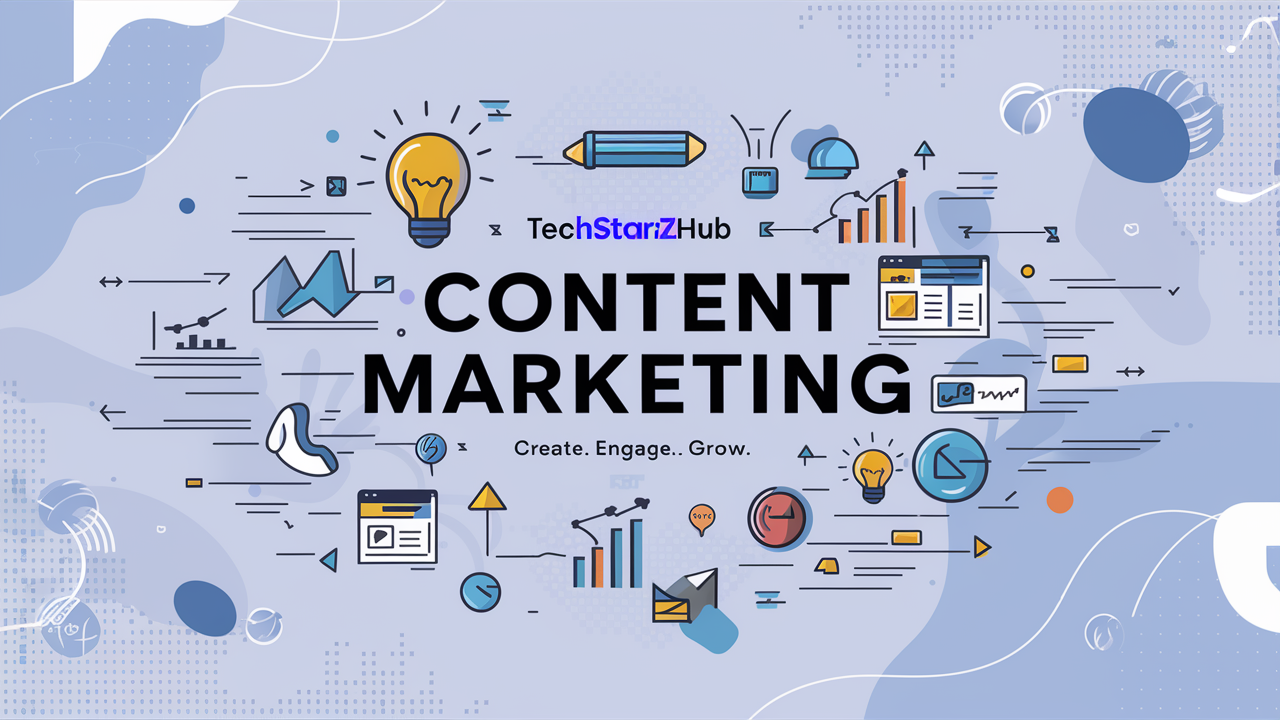The digital landscape is an ever-evolving arena where businesses thrive by leveraging innovative strategies and technological advancements. To succeed in this competitive domain, brands must employ an integrated approach combining digital marketing strategies, cutting-edge web and mobile development, strategic marketing campaigns, content writing, and SEO optimization. This article delves deep into these critical components, providing actionable insights to help your business stay ahead.
Digital Marketing Strategies: Setting the Foundation for Success
Digital Marketing encompasses a variety of techniques aimed at enhancing Brand visibility and engagement.

Below are key strategies for 2025:
- Omnichannel Marketing
- Why It Matters: Modern consumers interact with brands across multiple platforms—social media, websites, emails, and apps. Delivering a seamless experience across all channels is crucial.
- Implementation: Develop a cohesive strategy that integrates social media ads, personalized email campaigns, and retargeting tactics.
- Data-Driven Decision Making
- Why It Matters: Analyzing customer behavior and preferences allows brands to refine their strategies for better results.
- Implementation: Use tools like Google Analytics, HubSpot, and Tableau to gather actionable insights and tailor campaigns to audience needs.
- Personalization and AI Integration
- Why It Matters: Consumers expect relevant and personalized content. AI-powered tools enable real-time personalization.
- Implementation: Leverage AI chatbots for customer support and machine learning algorithms to suggest personalized product recommendations.
- Social Commerce
- Why It Matters: Platforms like Instagram and TikTok have become shopping hubs. Integrating e-commerce directly into social media improves conversions.
- Implementation: Use shoppable posts and influencer partnerships to drive sales.
Cutting-Edge Web and Mobile Development: Elevating User Experience
A robust online presence requires state-of-the-art web and mobile development.
Here are essential trends and practices for 2025:
- Progressive Web Apps (PWAs)
- Why It Matters: PWAs offer app-like experiences without the need for downloads, improving user accessibility and engagement.
- Implementation: Develop responsive and fast-loading PWAs using frameworks like React or Angular.
- AI-Powered Features
- Why It Matters: AI can enhance user experiences through intelligent recommendations, voice search, and predictive analysis.
- Implementation: Incorporate AI into your website or app with tools like TensorFlow or IBM Watson.
- Enhanced Mobile-First Design
- Why It Matters: Over 50% of web traffic comes from mobile devices. A mobile-first approach ensures optimal performance across all screens.
- Implementation: Use responsive design techniques and prioritize speed and ease of navigation.
- Blockchain for Security
- Why It Matters: Users value data security. Blockchain technology ensures transparency and reduces the risk of data breaches.
- Implementation: Integrate blockchain for secure transactions and user authentication.
- Voice Search Optimization
- Why It Matters: Voice assistants like Alexa and Google Assistant are transforming how users search for information.
- Implementation: Optimize content for natural language queries and incorporate schema markup for better visibility.
Strategic Marketing Campaigns: Maximizing ROI
Strategic marketing campaigns are pivotal in converting prospects into loyal customers.
Here’s how to design impactful campaigns:
- Goal-Oriented Planning
- Why It Matters: Clear objectives provide direction and measurable outcomes.
- Implementation: Use the SMART framework—Specific, Measurable, Achievable, Relevant, Time-bound—to set goals.
- Multi-Channel Targeting
- Why It Matters: Diversifying platforms increases reach and reduces dependency on a single channel.
- Implementation: Run ads on Google, Facebook, and LinkedIn simultaneously, tailoring messages for each audience.
- A/B Testing
- Why It Matters: Testing different versions of your campaign identifies the most effective approach.
- Implementation: Experiment with headlines, visuals, and CTAs to find the optimal combination.
- Remarketing Campaigns
- Why It Matters: Re-engaging users who have interacted with your brand boosts conversion rates.
- Implementation: Use Google Ads or Facebook Pixel to retarget users with personalized ads.
- Real-Time Engagement
- Why It Matters: Timely responses foster trust and encourage interactions.
- Implementation: Utilize live chat features and monitor social media mentions to address queries promptly.
Content Writing: Captivating and Converting Audiences

Content is the backbone of any digital strategy. Quality content drives traffic, engages audiences, and builds credibility.
Here are key practices:
- Storytelling
- Why It Matters: Stories create emotional connections, making your brand memorable.
- Implementation: Craft narratives around customer success stories, brand missions, or product journeys.
- Long-Form Content
- Why It Matters: In-depth articles establish authority and improve search rankings.
- Implementation: Publish comprehensive guides and whitepapers on topics relevant to your audience.
- Visual Content
- Why It Matters: Infographics, videos, and images enhance engagement and shareability.
- Implementation: Invest in professional graphic design tools and video editing software to create high-quality visuals.
- Consistency
- Why It Matters: Regular content builds trust and keeps your audience engaged.
- Implementation: Use a content calendar to plan and schedule posts across platforms.
- User-Generated Content (UGC)
- Why It Matters: UGC builds authenticity and encourages community involvement.
- Implementation: Encourage customers to share their experiences using your branded hashtag.
SEO Optimization: Dominating Search Rankings
Search Engine Optimization (SEO) remains a cornerstone of digital marketing.

By optimizing your content and website, you can improve visibility and drive organic traffic.
- Keyword Research
- Why It Matters: Understanding what your audience searches for is the first step to delivering relevant content.
- Implementation: Use tools like SEMrush, Ahrefs, or Google Keyword Planner to identify high-traffic, low-competition keywords.
- On-Page Optimization
- Why It Matters: Properly structured content helps search engines understand its relevance.
- Implementation: Optimize title tags, meta descriptions, and headers. Use internal linking to guide users and improve crawlability.
- Technical SEO
- Why It Matters: A technically sound website ensures better crawling and indexing by search engines.
- Implementation: Focus on site speed, mobile-friendliness, and secure HTTPS connections.
- Backlink Building
- Why It Matters: Quality backlinks enhance domain authority and search rankings.
- Implementation: Reach out to industry blogs for guest posting opportunities and create shareable content to attract links organically.
- Voice and Visual Search
- Why It Matters: The rise of smart devices and visual platforms changes how users search.
- Implementation: Optimize for conversational keywords and include descriptive alt text for images.
Integrating It All: A Unified Approach
Success in digital marketing and web development hinges on integrating these elements cohesively.
Here’s how to bring it all together:
- Collaborative Planning: Ensure marketing, development, and content teams work together.
- Consistent Branding: Maintain uniform messaging and design across all platforms.
- Regular Audits: Periodically evaluate performance metrics to refine strategies.
In 2025, the coordination between digital marketing strategies, cutting-edge web and mobile development, strategic marketing campaigns, content writing, and SEO optimization will determine a brand’s success. By embracing innovation and focusing on user-centric approaches, businesses can survive and thrive in this dynamic digital ecosystem. Implement these insights to position your brand as a leader in the digital age.


1 comment